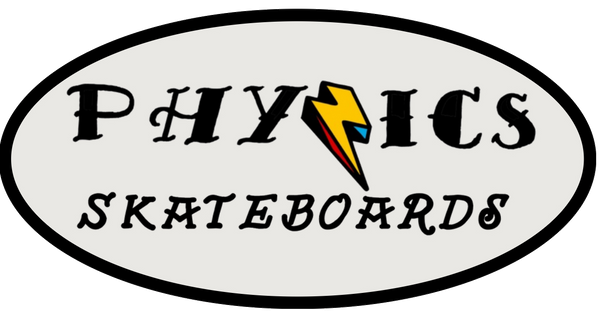Proper maintenance ensures your skateboard lasts longer, performs optimally, and remains safe to use. Whether you’re a beginner or a seasoned skater, regular care will keep your board in top shape for tricks, cruising, or commuting. This guide will cover everything you need to know about cleaning your skateboard, replacing worn parts, and conducting regular checkups.
Cleaning Your Skateboard
Dirt and grime can accumulate on your skateboard over time, affecting its performance and longevity. Cleaning the various components of your skateboard regularly will help you maintain its functionality and aesthetics.
1. Cleaning Grip Tape
-
Grip tape is crucial for keeping your feet secure on the board, but it can get dirty from dust, mud, and general wear.
-
Use a grip tape eraser to scrub away dirt and debris. These erasers are designed specifically for grip tape and can restore its texture.
-
For tougher stains, use a stiff brush and a small amount of soapy water. Scrub gently to avoid damaging the adhesive underneath.
-
Always dry the grip tape thoroughly after cleaning to prevent water from seeping into the deck.
2. Cleaning Wheels and Bearings
-
Remove the wheels and bearings: Use a skate tool to loosen the axle nuts and slide the wheels off the trucks. Carefully pop the bearings out of the wheels using a bearing remover or the truck axle.
-
Clean the bearings: Bearings can become clogged with dirt, reducing their ability to spin smoothly. Soak them in isopropyl alcohol for about 10 minutes to dissolve grime. Use a soft cloth or a small brush to remove any remaining debris.
-
Lubricate the bearings: Once cleaned and dried, apply a few drops of bearing lubricant to ensure smooth rotation. Avoid using household oils, as they can attract dirt.
-
Clean the wheels: Wipe down the wheels with a damp cloth to remove surface dirt. If the wheels are heavily soiled, use a mild soap solution for deeper cleaning.
3. Cleaning the Deck
-
The deck is the most visible part of your skateboard and can accumulate grime from your shoes and the environment.
-
Wipe the deck with a damp cloth to remove dirt. Avoid using excessive water, as it can weaken the wood.
-
For stubborn stains, use a mild cleaner and a soft brush. Be careful not to scrub too hard, as this can damage the graphics or finish.
Replacing Worn Parts
Skateboard components wear out over time, especially if you’re an avid skater. Replacing parts when needed ensures optimal performance and safety.
1. Wheels
-
Wheels can develop flat spots from power slides or cracks from impact.
-
If you notice uneven wear or significant damage, it’s time to replace them. Soft wheels used for cruising may wear faster than harder wheels designed for tricks.
-
When replacing wheels, consider your skating style. For street skating, smaller, harder wheels (around 52-54mm) are ideal. For cruising or ramps, larger, softer wheels (58mm+) provide better grip and comfort.
2. Bearings
-
Bearings are essential for smooth rolling. If your wheels don’t spin freely or make a grinding noise, the bearings may need replacement.
-
Upgrading to high-quality bearings can enhance speed and durability. Popular options include Bones Reds, Bronson Speed Co., and Swiss Bearings.
3. Trucks
-
Trucks are the metal components that attach the wheels to the deck. Over time, the bushings (rubber parts inside the trucks) can crack or lose elasticity.
-
Check the kingpin (the bolt holding the trucks together) for wear or damage. If it’s bent or stripped, replace it to ensure proper functionality.
-
Tighten or loosen the trucks to your preference, but replace them if they’ve developed cracks or excessive wear.
Regular Checkups
Conducting regular checkups on your skateboard ensures that all parts are functioning correctly and minimizes the risk of accidents.
1. Tighten Screws and Nuts
-
Use a skate tool or wrench to check the hardware (bolts and nuts) holding your trucks to the deck. Loose hardware can lead to instability while skating.
-
Tighten screws and nuts as needed, but avoid overtightening, which can strip the threads or damage the deck.
2. Inspect the Deck for Cracks
-
Check the deck for cracks or chips, especially near the edges and mounting holes.
-
Small chips can be sanded down, but large cracks may require replacing the deck. A compromised deck can break under pressure, posing a safety hazard.
3. Rotate Wheels
-
Rotating your wheels helps distribute wear evenly, extending their lifespan.
-
Swap the front wheels with the back wheels and flip them to use both sides evenly.
-
Regular rotation is particularly important for skaters who perform a lot of slides or sharp turns.
4. Test the Trucks and Bushings
-
Ensure the trucks pivot smoothly and the bushings are in good condition. Replace the bushings if they’re cracked, squished, or too soft for your skating style.
-
Test the tightness of the kingpin nut to maintain the desired turning response.
Pro Tips for Skateboard Maintenance
-
Store Properly: Keep your skateboard in a dry, cool place to avoid warping or rust. Avoid leaving it in direct sunlight or damp areas.
-
Protect Graphics: If you’re proud of your deck’s graphics, consider applying a clear grip tape or a protective sealant.
-
Travel Smart: When traveling with your skateboard, use a skate bag to prevent scratches and damage.
-
Replace Parts as a Set: When upgrading wheels or bearings, consider replacing them all at once to ensure consistent performance.
Maintaining your skateboard doesn’t have to be complicated. With regular cleaning, timely part replacement, and periodic checkups, you can keep your board performing at its best and extend its lifespan. A well-maintained skateboard not only ensures a smoother ride but also keeps you safe while skating. So, grab your tools and give your board the care it deserves!
